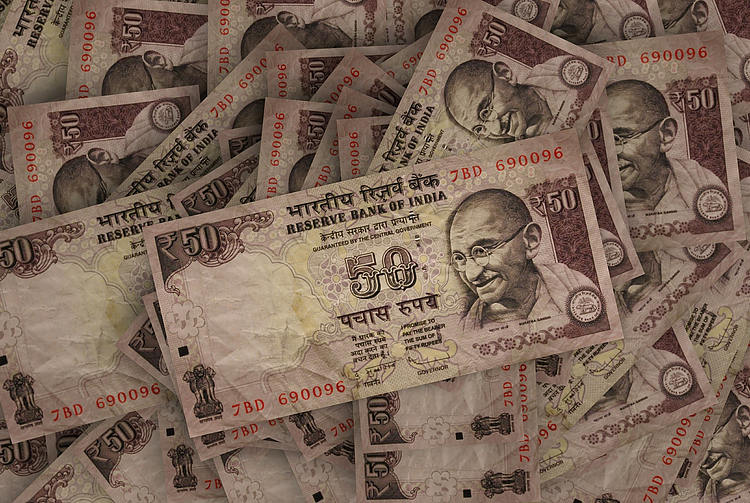- The Indian Rupee softens in Monday’s early European session.
- Substantial equity outflows could undermine the INR, but likely RBI intervention might cap its losses.
- Investors await Fedspeak on Monday for fresh impetus.
The Indian Rupee (INR) edges lower on Monday. The persistent outflows from Indian equities for a record monthly high exert some selling pressure on the local currency.
However, the decline in crude oil prices and the likely interventions by the Reserve Bank of India (RBI) through USD sales could help limit the INR’s losses in the near term. Looking ahead, Investors will monitor the Federal Reserve (Fed) Neel Kashkari and Jeffrey Schmid speeches on Monday for fresh impetus.
Daily Digest Market Movers: Indian Rupee loses ground amid outflow woes
- Foreign portfolio investors have sold a net amount of $8.4 billion so far in October, surpassing the previous record outflow of $8.35 billion set in March 2020.
- Atlanta Fed President Raphael Bostic said on Friday that he is not in a rush on rate cuts and sees the case for rate reduction in the central bank’s policy rate to somewhere between 3% and 3.5% by the end of next year, per Reuters.
- According to the CME FedWatch tool, traders have priced in a nearly 92.6% chance of a 25 basis points (bps) Fed rate cut in November.
- The US Building Permits fell by 2.9% to 1.428 million in September from 1.47 million in August, missing estimates of 1.46 million.
- Housing Starts for September declined by 0.5% to 1.354 millionversus 1.361 million prior, above the consensus of 1.35 million.
Technical Analysis: USD/INR keeps the positive picture in the longer term
The Indian Rupee trades in negative territory on the day. Technically, the bullish outlook of the USD/INR pair prevails on the daily timeframe, with the price holding above the ascending trend line and the key 100-day Exponential Moving Average (EMA). The 14-day Relative Strength Index (RSI) stands above the midline near 60.00, suggesting the further upside looks favorable.
Consistent demand above the all-time high of 84.15 could lead to a bullish upswing that could take USD/INR to 84.50, en route to the 85.00 psychological level.
On the downside, a decisive break below the rising trend line of 84.00 could revisit the previous support level at 83.71, the 100-day EMA. The next contention level to watch is 83.00, representing the round mark and the low of May 24.
RBI FAQs
The role of the Reserve Bank of India (RBI), in its own words, is “..to maintain price stability while keeping in mind the objective of growth.” This involves maintaining the inflation rate at a stable 4% level primarily using the tool of interest rates. The RBI also maintains the exchange rate at a level that will not cause excess volatility and problems for exporters and importers, since India’s economy is heavily reliant on foreign trade, especially Oil.
The RBI formally meets at six bi-monthly meetings a year to discuss its monetary policy and, if necessary, adjust interest rates. When inflation is too high (above its 4% target), the RBI will normally raise interest rates to deter borrowing and spending, which can support the Rupee (INR). If inflation falls too far below target, the RBI might cut rates to encourage more lending, which can be negative for INR.
Due to the importance of trade to the economy, the Reserve Bank of India (RBI) actively intervenes in FX markets to maintain the exchange rate within a limited range. It does this to ensure Indian importers and exporters are not exposed to unnecessary currency risk during periods of FX volatility. The RBI buys and sells Rupees in the spot market at key levels, and uses derivatives to hedge its positions.
India has run a trade deficit for most of its recent history, indicating its imports outweigh its exports. Since the majority of international trade takes place in US Dollars, there are times – due to seasonal demand or order glut – where the high volume of imports leads to significant US Dollar- demand. During these periods the Rupee can weaken as it is heavily sold to meet the demand for Dollars. When markets experience increased volatility, the demand for US Dollars can also shoot up with a similarly negative effect on the Rupee.
Read the full article here

